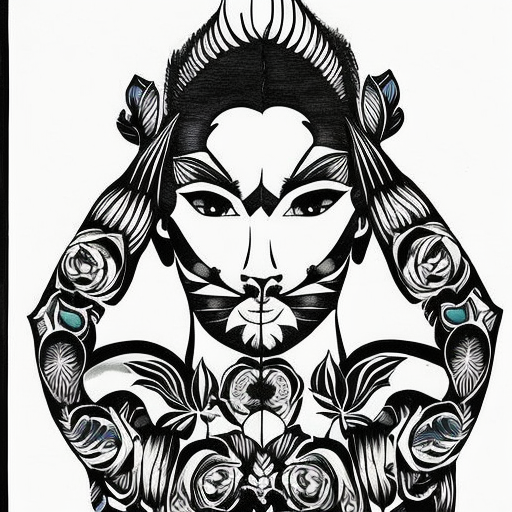Tattoo Art: A Timeless Expression of Identity and Creativity
Tattoo art is a form of body modification that has been practiced for centuries, with its origins dating back to ancient civilizations. Today, it has evolved into a vibrant and diverse art form that allows individuals to express their identity, beliefs, and creativity through permanent ink on their skin.
Ancient Origins and Cultural Significance
Tattooing has a rich history, with evidence of its practice found in various cultures around the world. In ancient Egypt, tattoos were associated with religious rituals and were often found on mummies. In Polynesia, tattoos served as a symbol of status, identity, and protection. Native American tribes used tattoos for spiritual and medicinal purposes.
The Evolution of Tattoo Art
Tattoo art has come a long way from its primitive beginnings. In the 18th and 19th centuries, tattoos gained popularity among sailors, who often adorned their bodies with nautical symbols and designs as a form of self-expression. However, tattoos were still stigmatized and associated with criminality.
It wasn’t until the 20th century that tattooing began to be recognized as a legitimate art form. Artists like Norman Collins, also known as Sailor Jerry, played a significant role in elevating the status of tattoo art. Collins introduced new techniques and styles, such as bold outlines and vibrant colors, which revolutionized the industry.
Styles and Techniques
Today, tattoo art encompasses a wide range of styles and techniques, allowing individuals to choose a design that reflects their personal taste and aesthetic preferences. Some popular styles include:
- Traditional: Also known as “old school,” this style is characterized by bold outlines, limited color palettes, and iconic imagery such as anchors, roses, and pin-up girls.
- Realism: This style aims to create tattoos that closely resemble photographs or lifelike images. Artists use shading, fine details, and a wide range of colors to achieve a realistic effect.
- Watercolor: Inspired by the fluidity and vibrancy of watercolor paintings, this style features soft edges, blending colors, and abstract designs.
- Blackwork: This style focuses on using only black ink to create intricate patterns, geometric shapes, and mandalas.
- Neo-Traditional: Combining elements of traditional tattooing with more contemporary influences, this style features bold outlines, vibrant colors, and a mix of traditional and modern imagery.
The Role of Tattoo Artists
Tattoo artists are skilled professionals who bring their clients’ visions to life. They work closely with individuals to design custom tattoos that reflect their unique personality and story. A good tattoo artist not only possesses technical skills but also has a deep understanding of composition, color theory, and anatomy.
Tattoo Art and Self-Expression
Tattoos have become a popular form of self-expression, allowing individuals to showcase their interests, beliefs, and experiences. Many people choose tattoos that hold personal significance, such as symbols representing their cultural heritage, quotes that inspire them, or images that commemorate important milestones in their lives.
Tattoo art has also become a platform for social and political activism. People use tattoos to raise awareness about various causes, express solidarity with marginalized communities, or challenge societal norms.
The Growing Popularity of Tattoo Art
In recent years, tattoo art has gained mainstream acceptance and popularity. It is no longer limited to specific subcultures but has become a form of self-expression embraced by people from all walks of life. This shift has led to an increase in the number of tattoo studios, conventions, and exhibitions dedicated to showcasing the talent and creativity of tattoo artists.
In conclusion, tattoo art has evolved from its ancient origins to become a respected and celebrated art form. With its diverse styles and techniques, it offers individuals a unique way to express their identity, beliefs, and creativity. Tattoo artists play a crucial role in bringing these visions to life, while the growing popularity of tattoo art reflects its enduring appeal as a form of self-expression.












